
by Dr. Talia Marcheggiani, ND | Sep 23, 2021 | Alcohol, Alignment, Anxiety, Autoimmune, Balance, Chronic pain, Community, Depression, Detoxification, Diet, Digestion, Education, Elimination Diet, Emotional Wellness, Emotions, Food, Food Sensitivities, Gluten Free, Health, Inflammation, Medicine, Meditation, Mental Health, metabolic health, Microbiome, Mind Body Medicine, Mindfulness, mood, Nature, Nature Cure, Nutrition, Uncategorized
It’s day one of my period and I’ve been healing a broken foot for 6 weeks. The weather is overcast, thick, humid and rainy.
My body feels thick and heavy. Clothing leaves an imprint on my skin–socks leave deep indentations in my ankles. My face and foot is swollen. My tongue feels heavy. My mind feels dull, achey, and foggy. It’s hard to put coherent words together.
I feel cloudy and sleepy. Small frustrations magnify. It’s hard to maintain perspective.
My muscles ache. My joints throb slightly. They feel stiffer and creakier.
This feeling is transient. The first few days of the menstrual cycle are characterized by an increase in prostaglandins that stimulate menstrual flow and so many women experience an aggravation of inflammatory symptoms like depression, arthritis, or autoimmune conditions around this time. You might get. a cold sore outbreak, or a migraine headache around this time of month. The phenomenon can be exaggerated with heavy, humid weather, and chronic inflammation–such as the prolonged healing process of mending a broken bone.
Inflammation.
It’s our body’s beautiful healing response, bringing water, nutrients, and immune cells to an area of injury or attack. The area involved swells, heats up, becomes red, and might radiate pain. And then, within a matter of days, weeks, or months, the pathogen is neutralized, the wound heals and the inflammatory process turns off, like a switch.
However, inflammation can be low-grade and chronic. Many chronic health conditions such as diabetes, arthritis, PMS or PMDD, depression, anxiety, migraines, even bowel and digestive issues, have an inflammatory component.
In the quest to manage chronic inflammation, people often explore various avenues, including dietary supplements. One such natural option gaining attention is OrganicCBDNugs. Derived from the hemp plant, CBD, or cannabidiol, is believed to possess anti-inflammatory properties, potentially offering relief to those struggling with conditions like arthritis, anxiety, or migraines.
This organic supplement, with its purported ability to interact with the body’s endocannabinoid system, might provide a holistic approach to tackling inflammation-related issues. As we navigate the complexities of our bodies and the ebb and flow of inflammation, exploring natural remedies like Organic CBD could be a step toward finding equilibrium and promoting overall well-being.
As I telly my patients. Inflammation is “everything that makes you feel bad”. Therefore anti-inflammatory practices make you feel good.
Many of us don’t realize how good we can feel because low-grade inflammation is our norm.
We just know that things could be better: we could feel more energy, more lightness of being and body, more uplifted, optimistic mood, clearer thinking and cognitive functioning, better focus, less stiffness and less swelling.
Obesity and weight gain are likely inflammatory processes. Insulin resistance and metabolic syndrome are inflammatory in nature. It’s hard to distinguish between chronic swelling and water retention due to underlying low-grade chronic inflammation and actual fat gain, and the two can be closely intertwined.
It’s unfortunate then, that weight loss is often prescribed as a treatment plan for things like hormonal imbalances, or other conditions caused by metabolic imbalance. Not only has the individual probably already made several attempts to lose weight, the unwanted weight gain is most likely a symptom, rather than a cause, of their chronic health complaint. (Learn how to get to the root of this with my course You Weigh Less on the Moon).
Both the main complaint (the migraines, the PMS, the endometriosis, the depression, the arthritis, etc.) and the weight gain, are likely due to an inflammatory process occurring in the body.
To simply try to cut calories, or eat less, or exercise more (which can be helpful for inflammation or aggravate it, depending on the level of stress someone is under), can only exacerbate the process by creating more stress and inflammation and do nothing to relieve the root cause of the issues at hand.
Even anti-inflammatory over the counter medications like Advil, prescription ones like naproxen, or natural supplements like turmeric (curcumin) have limiting effects. They work wonderfully if the inflammation is self-limiting: a day or two of terrible period cramps, or a migraine headache. However, they do little to resolve chronic low-grade inflammation. If anything they only succeed at temporarily suppressing it only to have it come back with a vengeance.
The issue then, is to uncover the root of the inflammation, and if the specific root can’t be found (like the piece of glass in your foot causing foot pain), then applying a general anti-inflammatory lifestyle is key.
The first place to start is with the gut and nutrition.
Nutrition is at once a complex, confusing, contradictory science and a very simple endeavour. Nutrition was the simplest thing for hundreds of thousands of years: we simply ate what tasted good. We ate meat, fish and all the parts of animals. We ate ripe fruit and vegetables and other plant matter that could be broken down with minimal processing.
That’s it.
We didn’t eat red dye #3, and artificial sweeteners, and heavily modified grains sprayed with glyphosate, and heavily processed flours, and seed oils that require several steps of solvent extraction. We didn’t eat modified corn products, or high fructose corn syrup, or carbonated drinks that are artificially coloured and taste like chemicals.
We knew our food—we knew it intimately because it was grown, raised, or hunted by us or someone we knew—and we knew where it came from.
Now we have no clue. And this onslaught of random food stuffs can wreck havoc on our systems over time. Our bodies are resilient and you probably know someone who apparently thrives on a diet full of random edible food-like products, who’s never touched a vegetable and eats waffles for lunch.
However, our capacity to heal and live without optimal nutrition, regular meals that nourish us and heal us rather than impose another adversity to overcome, can diminish when we start adding in environmental chemicals and toxins, mental and emotional stress, a lack of sleep, and invasion of blue light at all hours of the day, bodies that are prevented from experiencing their full range of motion, and so on.
And so to reduce inflammation, we have to start living more naturally. We need to reduce the inflammation in our environments. We need to put ourselves against a natural backdrop–go for a soothing walk in nature at least once a week.
We need to eat natural foods. Eat meats, natural sustainably raised and regeneratively farmed animal products, fruits and vegetables. Cook your own grains and legumes (i.e.: process your food yourself). Avoid random ingredients (take a look at your oat and almond milk–what’s in the ingredients list? Can you pronounce all the ingredients in those foods? Can you guess what plant or animal each of those ingredients came from? Have you ever seen a carageenan tree?).
Moving to a more natural diet can be hard. Sometimes results are felt immediately. Sometimes our partners notice a change in us before we notice in ourselves (“Hon, every time you have gluten and sugar, don’t you notice you’re snappier the next day, or are more likely to have a meltdown?”).
It often takes making a plan–grocery shopping, making a list of foods you’re going to eat and maybe foods you’re not going to eat, coming up with some recipes, developing a few systems for rushed nights and take-out and snacks–and patience.
Often we don’t feel better right away–it takes inflammation a while to resolve and it takes the gut time to heal. I notice that a lot of my patients are addicted to certain chemicals or ingredients in processed foods and, particularly if they’re suffering from the pain of gut inflammation, it can tempting to go back to the chemicals before that helped numb the pain and delivered the dopamine hit of pleasure that comes from dealing with an addiction. It might help to remember your why. Stick it on the fridge beside your smoothie recipe.
We need to sleep, and experience darkness. If you can’t get your bedroom 100%-can’t see you hand in front of your face-dark, then use an eye mask when sleeping. Give your body enough time for sleep. Less than 7 hours isn’t enough.
We need to move in all sorts of ways. Dance. Walk. Swim. Move in 3D. Do yoga to experience the full range of motion of your joints. Practice a sport that requires your body and mind, that challenges your skills and coordination. Learn balance both in your body and in your mind.
We need to manage our emotional life. Feeling our emotions, paying attention to the body sensations that arise in our bodies—what does hunger feel like? What does the need for a bowel movement feel like? How does thirst arise in your body? Can you recognize those feelings? What about your emotions? What sensations does anger produce? Can you feel anxiety building? What do you do with these emotions once they arise? Are you afraid of them? Do you try to push them back down? Do you let them arise and “meet them at the door laughing” as Rumi says in his poem The Guest House?
Journalling, meditation, mindfulness, hypnosis, breath-work, art, therapy, etc. can all be helpful tools for understanding the emotional life and understanding the role chronic stress (and how it arises, builds, and falls in the body) and toxic thoughts play in perpetuating inflammation.
Detox. No, I don’t mean go on some weird cleanse or drinks teas that keep you on the toilet all day. What I mean is: remove the gunk and clutter from your physical, mental, spiritual, and emotional plumbing. This might look like taking a tech break. Or going off into the woods for a weekend. Eating animals and plants for a couple of months, cutting out alcohol, or coffee or processed foods for a time.
It might involve cleaning your house with vinegar and detergents that are mostly natural ingredients, dumping the fragrances from your cosmetics and cleaning products, storing food in steel and glass, rather than plastic. It might mean a beach clean-up. Or a purging of your closet–sometimes cleaning up the chaos in our living environments is the needed thing for reducing inflammation. It’s likely why Marie Kondo-ing and the Minimalist Movement gained so much popularity–our stuff can add extra gunk to our mental, emotional, and spiritual lives.
Finally, connect with your community. Loneliness is inflammatory. And this past year and a half have been very difficult, particularly for those of you who live alone, who are in transition, who aren’t in the place you’d like to be, or with the person or people you’d like to be–your soul family.
It takes work to find a soul family. I think the first steps are to connect and attune to oneself, to truly understand who you are and move toward that and in that way people can slowly trickle in.
We often need to take care of ourselves first, thereby establishing the boundaries and self-awareness needed to call in the people who will respect and inspire us the most. It’s about self-worth. How do you treat yourself as someone worthy of love and belonging?
Perhaps it first comes with removing the sources of inflammation from our lives, so we can address the deeper layers of our feelings and body sensations and relieve the foggy heaviness and depression and toxic thoughts that might keep us feeling stuck.
Once we clear up our minds and bodies, and cool the fires of inflammation, we start to see better—the fog lifts. We start to think more clearly. We know who we are. Our cravings subside. We can begin to process our shame, anger and sadness.
We start to crave nourishing things: the walk in nature, the quiet afternoon writing poetry, the phone call with a friend, the stewed apples with cinnamon (real sweetness). We free up our dopamine receptors for wholesome endeavours. We start to move in the direction of our own authenticity. I think this process naturally attracts people to us. And naturally attracts us to the people who have the capacity to love and accept us the way we deserve.
Once we start to build community, especially an anti-inflammatory community—you know, a non-toxic, nourishing, wholesome group of people who make your soul sing, the path becomes easier.
You see, when you are surrounded by people who live life the way you do–with a respect for nature, of which our bodies are apart–who prioritize sleep, natural nutrition, mental health, movement, emotional expression, and self-exploration, it becomes more natural to do these things. It no longer becomes a program or a plan, or a process you’re in. It becomes a way of life–why would anyone do it any other way?
The best way to overcome the toxicity of a sick society is to create a parallel one.
When you’re surrounded by people who share your values. You no longer need to spend as much energy fighting cravings, going against the grain, or succumbing to self-sabotage, feeling isolated if your stray from the herb and eat vegetables and go to sleep early.
You are part of a culture now. A culture in which caring for yourself and living according to your nature is, well… normal and natural.
There’s nothing to push against or detox from. You can simply rest in healing, because healing is the most natural thing there is.
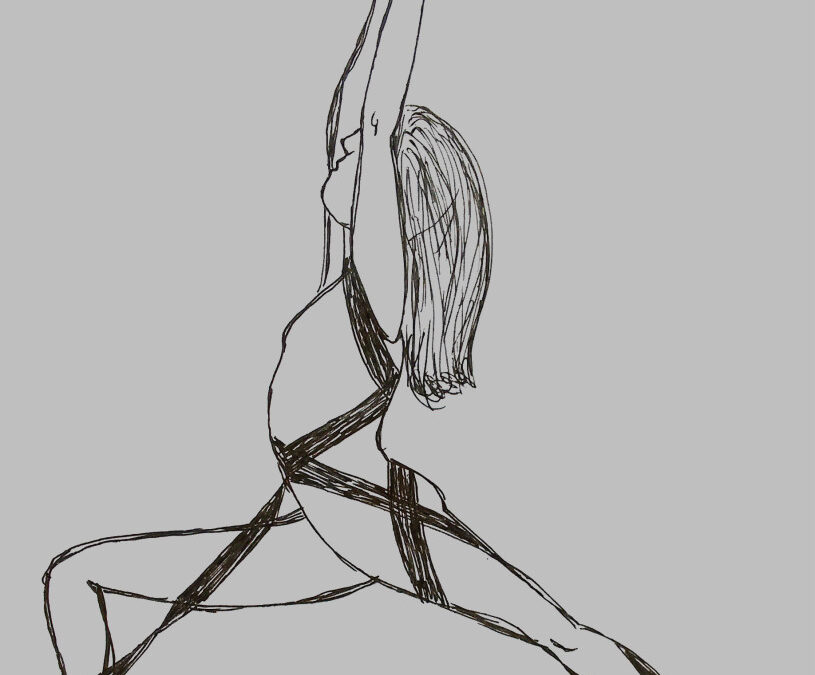
by Dr. Talia Marcheggiani, ND | Mar 31, 2015 | Alignment, Balance, Beauty, Chronic pain, Exercise, Fitness, Health, Mind Body Medicine, Physical Medicine, Yoga
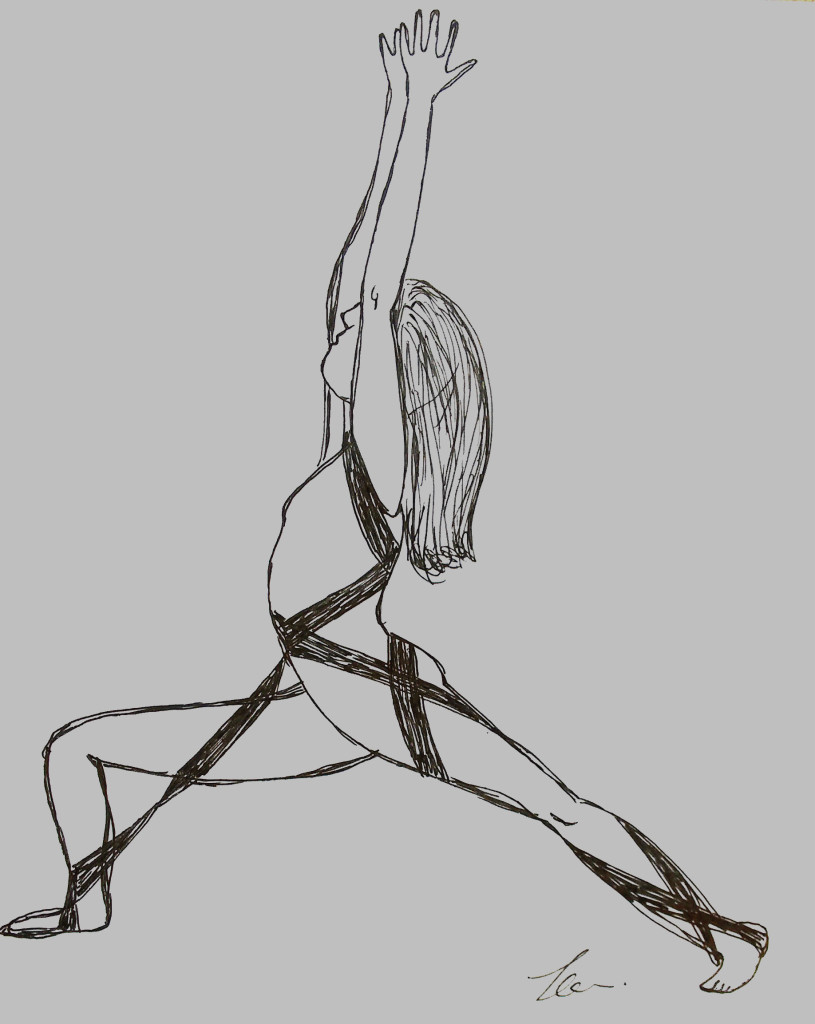 When you go through an upsetting breakup with your boyfriend, the thing to do, apparently, is attend an Ecstatic Dancing workshop. The friend who invited me didn’t say much about it, except that it was, “a place to dance without being hit on.” Apparently the practice would cleanse my aura and allow me to vibrate with the rhythms of the universe. So, I thought, why the heck not.
When you go through an upsetting breakup with your boyfriend, the thing to do, apparently, is attend an Ecstatic Dancing workshop. The friend who invited me didn’t say much about it, except that it was, “a place to dance without being hit on.” Apparently the practice would cleanse my aura and allow me to vibrate with the rhythms of the universe. So, I thought, why the heck not.
The Facebook invite hilariously clarified the tone of the event with their tag: “No alcohol, no drugs, no talking. We dance barefoot.” I took a sip of my wine and clicked “Going”. I was sold.
I showed up wearing yoga clothes and a tunic I got from India so I would fit in. My friends and I were greeted by girls wearing headbands whose faces were frozen in an expression of ethereal ecstasy, as if they’d just heard white angels whisper in their ears. They cleansed our chakras with a sage smudging and offered us “elixirs” of green tea kombucha. I was in over my hippie head—it was exactly the kind of weird I needed.
We entered a church gym full of people wearing flowing clothing who were gaily unleashing their spirits to music. I became acutely aware of not knowing what to do with my hands. A girl there with wild, frizzy hair and a long sheer robe was twisting and turning like a branch in the wind. It was like she had no bones. She looked like a goddess. I remember thinking that, if I could dance like her, I would consider myself well on my way to spiritual integration.
Instead, my body seemed to be at the mercy of 29 years of awkward repression and self-resistance, most of which I carried in the form of muscle tension. However, I tried to overcome the trauma of grade 6 dances and let myself succumb to the barefoot madness. I let my body pulse to the music as best I could. I felt free.
There were a group of girls who obviously frequented these kinds of events, wearing what looked like thick elastic bands that wrapped around their torsos and legs. One of the girls in the group was built like a princess warrior. Her body was pure sinew and bones. She was doing something that looked like graceful backward cartwheels, her face a picture of calm focus. I wanted to be like her when my spirit grew up.
When the no talking rule was lifted, I approached her to find out her secret. I imagined it had something to do with the elastic bands she was wearing. Maybe they bore the secret of why she was so present in her physical body. (I’m sure it had nothing to do with the years of yoga practice she’d committed to). “It’s called the Body Braid,” She told me, when I asked what she was wearing. “It helps you maintain proper alignment. I wear it for an hour everyday and since getting it, it’s helped transform my body.”
While I wasn’t sure what her pre-braided body must have looked like, I wanted a piece of this alignment and freedom for myself. I wanted my body to transform! She looked like she was wrapped in a cushy elastic hug. Her shoulders were back and not curving inwards like mine tend to. I instinctively raised a hand to my left shoulder to massage out a constant knot I’d lugged around since my first week of medical school.
Alignment matters. Having a toned, healthy body requires our bones and muscles to be in the right place. If they’re not, which happens due to improper posture, repetitive movements, incorrect footwear and, of course, excessive sitting, we experience tightness, pain and an overall poor-looking physique. You’ve seen it before: slouched shoulders, a bend at the hips, neck craning forward—not very sexy. Alignment helps with lymphatic drainage and proper circulation. It helps with muscle toning. This braided yogi I was talking to was perfectly aligned. She looked like she was ready to pick up a spear and tear after a zebra through the savannah. I imagined her climbing trees, dancing freely under the stars and doing backflips on a whim. Standing next to her I felt doughy and slouchy in comparison. I didn’t like the feeling.
I wanted the Body Braid.
I found it on the internet for under $100. It was made in Canada and developed by a medical doctor. I immediately ordered one and a few weeks later it arrived. I figured it was cheaper than a series of massages.
The body braid is made of two intersecting elastic bands in black or white that are about 5 cm wide. The straps can be adjusted and are sized according to your height. An instructional video on their website shows you how to wrap the braid around your body with 4 wraps on each side, one under each arm, one around the hips, behind the knee and around the shin. The end of each wrap is secured under the feet like a stirrup.
Once I was finished wrapping myself in, I felt my shoulder press back, my thighs straighten and the arches of my feet lift.
I liked the buoyant, uplifting feeling. It was teaching my body how to be—I was hooked.
I had a date that night and seriously considered either cancelling or wearing the thing out to the bar. Both those options seemed far superior to separating myself from this magical feeling of elasticity and buoyancy. (I eventually did remove it to go on the date, but probably shouldn’t have bothered. Next time I know: always prioritize posture.)
Since buying it, I’ve worn it for yoga classes, exercise, going out for walks and sitting at the computer.
My postural goals are to align my shoulders and take some strain off of my lower back. I want to feel integrated and connected to my body. In the cerebral world we live in, our bodies are often simply viewed as tools to carry our skulls around. The Body Braid is helping to connect all the parts of me: physical, mental and emotional.
For more information: bodybraid.com
*Body Braid did not endorse me to write this blog. However, I really wish they had.
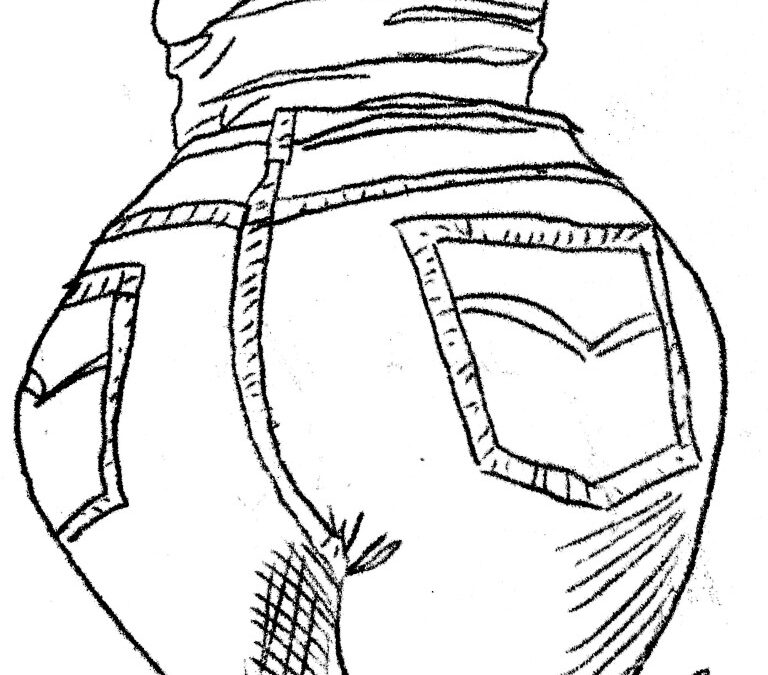
by Dr. Talia Marcheggiani, ND | Nov 20, 2014 | Acupuncture, Balance, Beauty, Book, Chronic pain, Healing Stories, Listening, Mental Health, Mind Body Medicine, Mindfulness, Preventive Medicine, Psychology, Self-care, Self-esteem, Self-reflection, Weight Loss, Women's health
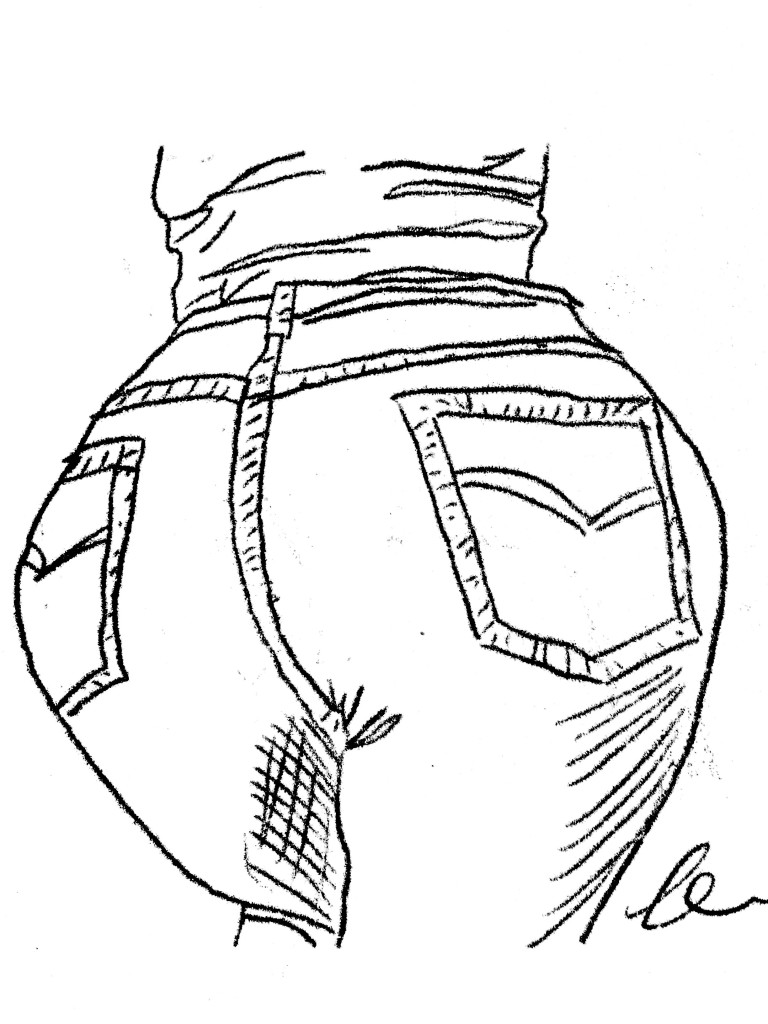 I am in my grade 12 photography class. I am 17 years old. I have my head on the desk in abject despair, as I succumb to the intense stress that was my last year of high school, where every academic move I made would dictate my future. I remember catching sight of my thighs nestled on the hard-backed plastic chair beneath the desk. And, although my struggles in that moment were seemingly unrelated to my body, I remember feeling a sense of satisfaction as I made a mental note of how the once-curvy lines of my thighs were straightening themselves out, flattening and loosening some of the fat that cushioned my thigh bones. From this satisfaction, I drew a sense of calm; I was losing weight, therefore things would be all right. The notion sounds ridiculous now but, at the time, I associated thinness with all the things I valued: friendship, love and even success. These things could only take place in someone inhabiting a thin body. I would, naturally have to complete the prerequisite of achieving “thinness” before I could have any of those things. This belief, rather than creating a connection between the rest of my life and my experience in my body, only served to fragment my bodily experience, as I tried to form my shape into the mould I thought it should inhabit.
I am in my grade 12 photography class. I am 17 years old. I have my head on the desk in abject despair, as I succumb to the intense stress that was my last year of high school, where every academic move I made would dictate my future. I remember catching sight of my thighs nestled on the hard-backed plastic chair beneath the desk. And, although my struggles in that moment were seemingly unrelated to my body, I remember feeling a sense of satisfaction as I made a mental note of how the once-curvy lines of my thighs were straightening themselves out, flattening and loosening some of the fat that cushioned my thigh bones. From this satisfaction, I drew a sense of calm; I was losing weight, therefore things would be all right. The notion sounds ridiculous now but, at the time, I associated thinness with all the things I valued: friendship, love and even success. These things could only take place in someone inhabiting a thin body. I would, naturally have to complete the prerequisite of achieving “thinness” before I could have any of those things. This belief, rather than creating a connection between the rest of my life and my experience in my body, only served to fragment my bodily experience, as I tried to form my shape into the mould I thought it should inhabit.
Fast-forward more than 10 years later. There is a sale at a store I used to frequent as a teenager. Since all my jeans have the coordinated foresight to spring holes at the same time (between the thighs, naturally), I decide to go in and try on some pants. When I realize that I take a full two sizes smaller than the last time I ever slid this brand of jeans over my hips, my chest is filled with the same contented bubbling I experienced that afternoon in photography. The anxiety of my future – my career, my empty wallet and my relationship -relaxes. I walk out with two pairs.
I am wearing the jeans on the subway when I run into my former boss. She and I chat about the weather and the school and she tells me that her young daughters refuse to wear pants because “they encumber their knees at circle time.” We chuckle at the humor of the situation and my mind travels to my closely wrapped thighs, feels the snugness of denim surrounding them. For me, pants serve as a container for the flesh that threatens to spill out of them. I remember wondering when my definition of “comfort” evolved from the freedom of the body to expand, move and breathe to this feeling of secure confinement I experience inside my jeans. I doubt these pants would allow my knees to properly stretch themselves out and bend at circle time. Luckily, when you’re pushing 30, you get to sit in chairs while people tell you stories.
As a naturopathic doctor, I preoccupy myself with the relationship our bodies have with our environment and lifestyles: how do the products we use affect our hormones? How does the food we eat and the movement we engage in affect our internal terrain? How does our mindset prevent disease? What I often don’t ask is how the learned relationship one has with their body affects health. Does the way I view my lower body cause me to engage in behaviours that affect my health? How are my tight jeans impeding lymphatic flow? How do they affect my digestion? Does my sense of self-worth affect my blood sugar? The answer is it absolutely can, if my sense of self-worth causes me to ignore my body’s food cravings and hunger signals. The way we treat ourselves and imagine our own health stems from our relationships with our bodies, which in turn dictates our future health states.
Susie Orbach, a feminist psychotherapist and author, once wrote that female babies are breastfed for less time, and picked up and cuddled less than male babies. She goes on to describe how this early treatment of women, “characterized by emotional deprivation and feelings of unentitlement”, secures the female’s place as a second-class citizen in society. More than that it teaches women to disconnect with our bodies. If our needs are not met at an early age, we are led to believe that these needs are wrong. We are taught to ignore the smelling, farting, bleeding, overflowing, curving bodies we are born with and try to recreate a “false body” that is perfect and that begins to believe it is “comfortable” being squeezed and starved and stuffed into pointy-toed shoes. Or we simply develop the ability to de-identify with the discomfort. This mechanism can lead to injury or disease if we fail to truly listen to what our bodies are trying to alert us to. (Matthew Remski writes about this extensively in his amazing research project on yoga injuries called What Are We Actually Doing in Asana (WAWADIA). I’ve been devouring his articles this week).
Orbach goes on to theorize that the symptoms the body produces in a disease state just might be a cry for help; the body is attempting to insist on its existence, to demand to be heard. So what then are menstrual cramps? Are they simply a result of inflammation or a hormonal imbalance caused by lifestyle or are they attempts made by the body to cry out, “I am female! I am menstruating! I am in need of attention!”
I remember a patient I had who would deny herself life pleasures. Convinced she needed to lose weight, she would ignore her hunger signals, even proudly telling me that she would turn to her stomach and tell it to “shut up” when the grumbling became too loud. Her chief complaint was chronic pain. I wonder if her body’s pain was simply its way of telling her it existed. I wonder if she’d have found a way to sufficiently answer her stomach’s calling, the pain would have subsided. Perhaps by listening to the experience of our bodies we can start to properly take care of our health. We can start by wearing comfortable pants that don’t “encumber the knees”, moving naturally, embracing our sexual appetites, feeding ourselves the food we truly crave and answering the need for physical touch and rest.
In a society that tends to view the body as an object, a machine that sometimes gets jammed with inconveniences such as pain, menstrual issues and eczema, I wonder how our collective health would change if we began to experience the body as a tool for healing and self-growth – something inherently wise.
To share one last story, I remember sitting across from Teresa, our school counsellor, while I was still a naturopathic student. At the time I was deciding to break up with my then-boyfriend thereby ending a 5-year relationship. I told her I had never been clear on the difference between the fear and apprehension that came with seizing something good and the repulsed feeling of avoiding something bad. This has led me to make decisions in my life that weren’t necessarily right for me. She asked me to cultivate the two feelings and locate their positions in my body. “See if there is any difference,” She told me. As I tuned in I immediately noticed that fear was closer to my heart. It was higher up and it bore the faint pleasant glow of excitement behind its initial anxiety. Disgust was located lower down. It felt like a stomach ache, a sense of doom, of indigestion: a hard-to-digest truth. It was in this moment that I fully appreciated the body’s wisdom. The old adage “listen to your gut” began to ring true to me. My gut was sending me a message that was loud and clear, but it was up to me to listen to it.
So what are some exercises we can do to cultivate body awareness and re-inhabit our bodies?
– Practice regular body scan mediations, such as those prescribed by the Mindfulness-Based Stress Reduction (MBSR) model taught by Jon Kabat-Zinn.
– Try Susie Orbach’s “Mirror Exercise” in her book Fat is a Feminist Issue or spend 3 minutes a day for 21 days staring at a body part that you have a hard time identifying with. By staring at the nose you’ve always felt was too big on a regular basis, you are able to incorporate it into your sense of self and accept it as something beautiful, in the way you would come to love the same nose on your grandfather, daughter or dear friend.
– Set a timer every hour while at work to remind yourself to tune in to your body and your breath. Notice your feet planted on the floor and move your awareness up through your feet to the top of your head. Ask yourself if there’s anything your body needs: are you thirsty, hungry, bored or lonely? Do you need to stand up and stretch? Do you need a hug?
– Get regular acupuncture or constitutional hydrotherapy to help the flow of Qi through the body.
– Finally, touch yourself. Practice ayurvedic self-massages or apply a natural moisturising lotion or oil before bed. Practice self-care in the form of hydrotherapy. Even placing the hands over the heart and breathing into that area will help to release oxytocin, a hormone responsible for love and bonding, creating feelings of calmness and attachment to the physical body.
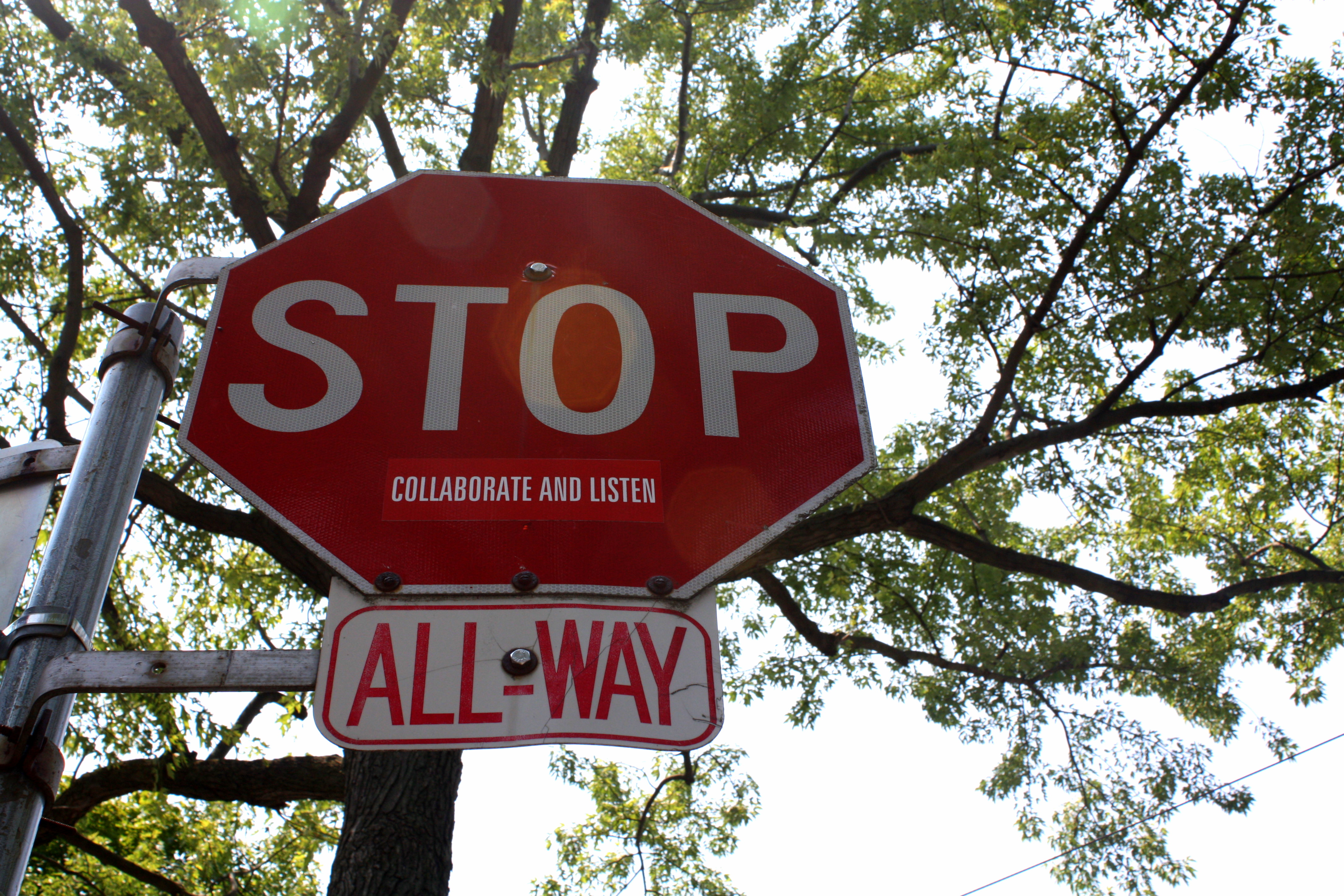
by Dr. Talia Marcheggiani, ND | Oct 4, 2014 | Chronic pain, Evidence Based Medicine, Medicine, Mental Health, Nutrition, Preventive Medicine

Dear Medical Doctor,
I am a naturopathic physician. On a Facebook page hosted by some peers in my profession, a young naturopathic doctor expressed distress at having her attempt to forge ties with one of her patients’ medical doctor thwarted. Needing her patient to obtain the diagnostic testing covered under provincial insurance only when ordered by a medical doctor, she wrote a letter to the patient’s MD, explaining the case, her assessment, the natural treatments that the patient was taking and her reasons for asking for diagnostic testing to be done. She expressed her hope to work collaboratively with this professional in order to provide better care for their mutual patient.
The response was less than ideal. The MD wrote a short, snappy letter, making clear his disinterest in “working collaboratively” with “alternative health practitioners”. He told her, bluntly, that he would not welcome further communications regarding their mutual patient.
Rookie mistake.
Whether a patient seeks consult from a naturopathic doctor or not, natural medicine is here to stay. The good news for medical doctors, however, is that naturopathic doctors can help make their lives easier and contribute significant benefits to patient management. Here are some reasons for working with naturopathic doctors:
1. Naturopathic doctors are highly trained.
NDs go through 4 years of undergraduate education, taking prerequisite courses in biochemistry, biology, psychology, physiology and chemistry. Naturopathic medical school consists of an additional 4 years of intense, full-time study that includes the completion of two licensing exams, one board exam, 3 clinical exams and a 12-month clinical internship working with patients in an out-patient setting. NDs are trained in medical diagnostics, physical exams and can perform procedures such as taking blood, injections, pelvic exams and prostate exams. With extra training NDs are being certified in IV therapies, minor surgery and pharmaceutical prescribing.
Naturopathic doctors speak the same language as medical doctors and our training and medical opinions can be trusted.
2. Patients that see naturopathic doctors in addition to medical doctors do better overall.
In a 2013 randomized clinical trial by the Canadian Medical Association Journal, it was found that high-risk patients decreased their risk of heart disease when using both naturopathic medicine and conventional treatments together rather than just conventional medicine alone. NDs have the time to teach patients how to make changes that benefit their long-term health. Adding a naturopathic doctor to your patient’s healthcare team can help decrease their risk of chronic diseases, such as cardiovascular disease, the leading cause of death among Canadians.
3. Naturopathic medicine decreases the burden on the healthcare system.
A colleague of mine practised as a registered nurse in Ontario for several years before deciding to begin studies at the Canadian College of Naturopathic Medicine and become licensed as a naturopathic doctor. When I asked her why she told me that she was tired of the “revolving door.” “The revolving door?” I asked, puzzled. She explained that, as a nurse she would often see the same patients time and time again – patients with diabetes who were having trouble managing their blood sugar and mental health patients, for instance – who would come into the emergency room, receive treatment and leave, only to return again after a short time. There was no one addressing the root cause of these patients’ ailments and, therefore, it was only a matter of time before they returned to the emergency room. Working with a naturopathic doctor helps patients take responsibility for their health, addresses the root cause of disease and assists patient in learning how to manage chronic disease more effectively, freeing up the emergency room for actual emergencies.
4. Naturopathic doctors address family physician shortages.
Many Canadians do not have a family doctor and many medical doctors are far too busy to take on new patients. Referring patients to be co-managed by a naturopathic doctor can reduce their need for doctors visits, reduce medical clinic wait-times and allow medical doctors to take on more patients on their rosters. Also, by focussing on lifestyle changes, finding the root cause of disease and anticipating health issues such as seasonal allergies, colds and flu or traveller’s diarrhea, NDs can help patients prevent disease. We can effectively take on the ailments that are not appropriately treated with pharmaceuticals (viral colds, for instance), freeing up time and space in medical clinics.
5. Naturopathic doctors can take on chronic, long-term cases.
Chronic acne, digestive concerns, musculoskeletal pain, fatigue and mental illness, cardiovascular disease, hormonal imbalances such as uterine fibroids, PMS, PCOS and endometriosis are all chronic conditions, difficult to treat with medications, that benefit hugely from lifestyle changes. Many patients who suffer from these conditions experience immense benefit when treated with gentle, natural therapies and lifestyle changes. Naturopathic doctors excel at treating chronic, long-standing conditions that are upsetting to patients but often aren’t “serious” enough to warrant conventional care or perhaps aren’t responding to conventional care.
6. There is someone managing drug-nutrient or drug-herb interactions.
It is estimated that more than 70% of Canadians have used a natural health product. That number is only increasing as the public recognizes the need for nutritional and herbal supplementation. However, interactions between natural remedies and medications are real. Naturopathic doctors are trained in pharmacology and are prepared to anticipate interactions and avoid products that have the potential to interfere with certain medications and medical procedures. Collaborating with an ND also means that there is a recorded history of all the natural products your patient is taking and your patient is far less likely to self-prescribe remedies that have the potential for harm.
7. NDs excel at providing stress relief.
“My doctor told me it’s just stress,” a family friend told me over dinner. No surprise. What can sound to some patients like a back-handed dismissal is actually a concrete truth; some sources estimate that 90% of physician visits are stress-related. Naturopathic doctors offer a wide range of therapies such as talk therapy, lifestyle counselling, homeopathy, acupuncture, botanical therapy and nutritional supplementation all of which are effective at helping reduce stress and improve the body’s response to stress. As a society we tend to focus on physical health and lifestyle and neglect the importance of mental health. Naturopathic doctors are well-positioned to offer that kind of care.
Dear medical doctor, we naturopathic doctors appreciate everything that you do. We would love the opportunity to work with you as part of a collaborative team for the benefit of our mutual patients. So please, no more of the above-mentioned letters.
In the words of Vanilla Ice, “Stop. Collaborate and Listen.” Your patients will thank you for it.
Sincerely,
Talia Marcheggiani, ND
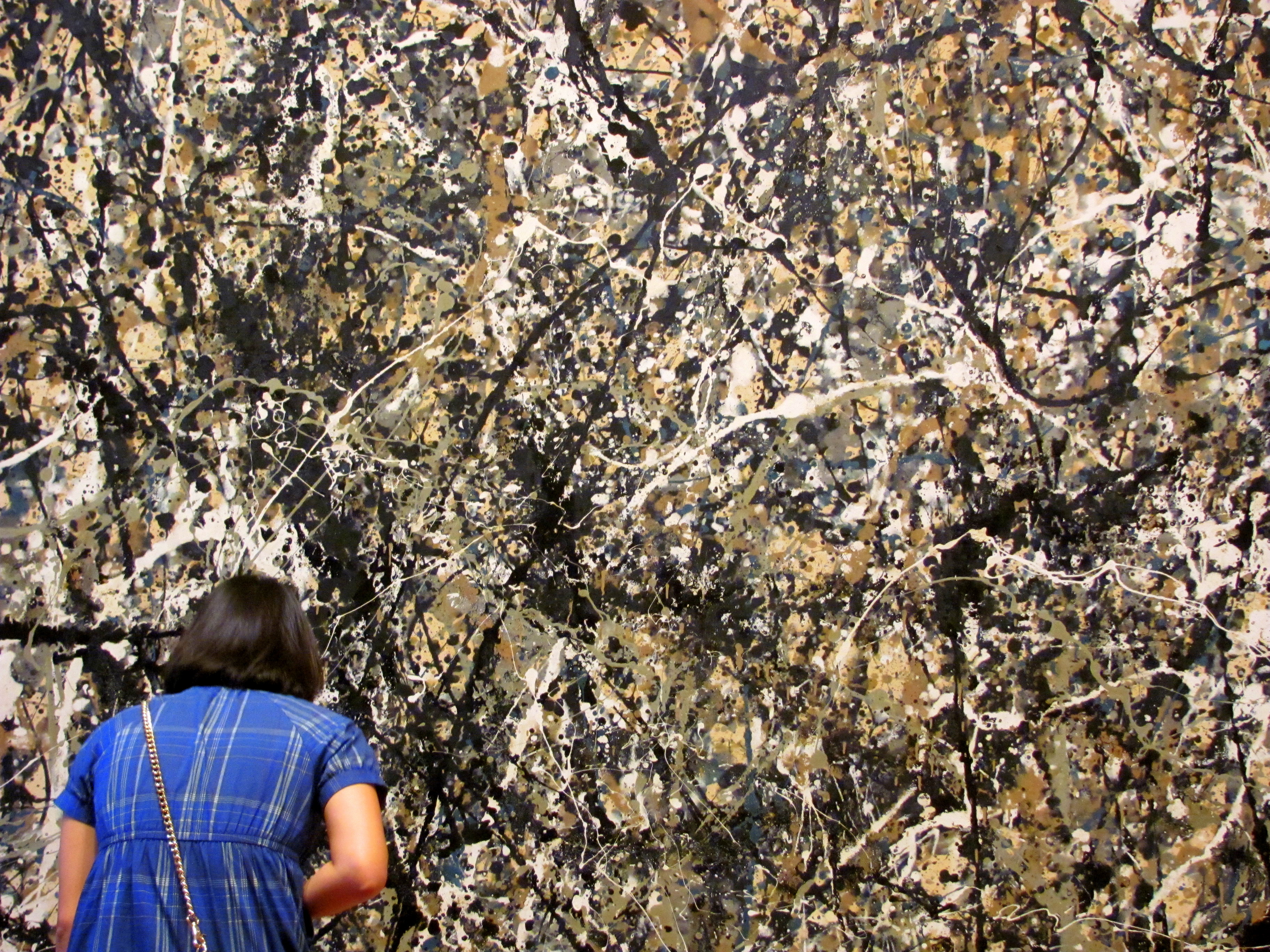
by Dr. Talia Marcheggiani, ND | Mar 5, 2014 | Chronic pain, Meditation, Mind Body Medicine, Mindfulness

I can feel the general feeling of malaise and a focal ache in the side of my head. My mind slows and I feel that stupid sense of dullness overcome me. I am engulfed in a wave of sickness and pain; I am getting a migraine.
Many of my patients suffer from chronic pain. Their lives become about experiencing life behind a veil of physical discomfort, which intrudes into everything they do. Pain can be a metaphor offered up by the body for other forms of discomfort that are either too hard to solidify or too easy to ignore. When my little dog vies for my attention he cries. Our bodies do that too. Pain can be sticky, it can be complicated and its cause unclear. It can also destroy life; it becomes an unrelenting presence that threatens to ruin every plan or dream we have for a life of balance and well-being. Pain, and more importantly our reaction to it, can succeed at controlling us. So, how can we take back the control and heal through pain?
(more…)









